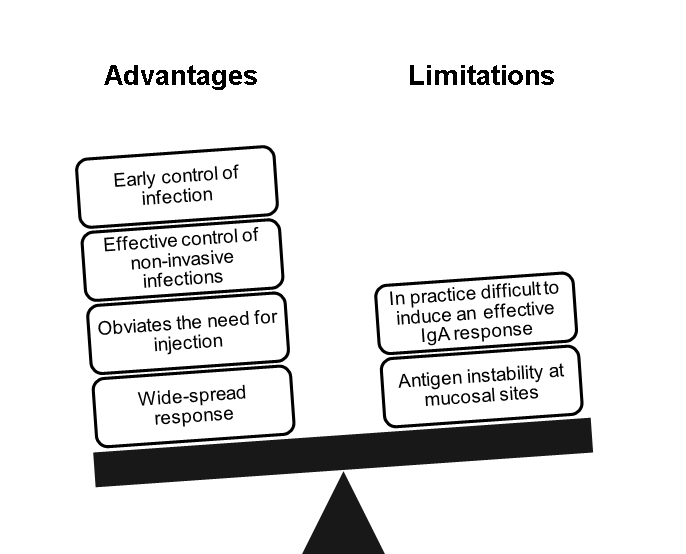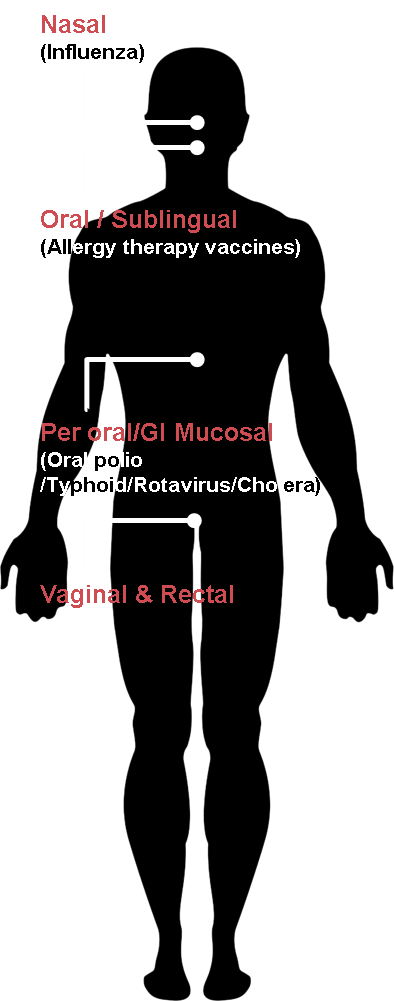BiteSized Immunology: Vaccines & Therapeutics

Mucosal Vaccination
Mucosal tissues (e.g. nasal, oral, ocular, rectal, vaginal) cover a large surface of the body. Since many infections are initiated at mucosal sites, it is critical to develop strategies for neutralising the infectious agent at these surfaces. Mucosal vaccination involves the administration of vaccines at one or more mucosal sites leading to induction of immune responses at the mucosal site of administration, other mucosal sites, and/or systemically. Figure 1 highlights the relative advantages and limitations of mucosal vaccination.

Immunisation
Immunisation involves the delivery of antigens to the mucosal immune system (dispersed or organised into units such as Peyer’s patches in the intestine or the nasal-associated lymphoid tissue in the oropharangeal cavity). The antigen delivery systems may comprise a simple buffer solution with/without adjuvants or an advanced particulate formulation, such as liposomes or nanoparticles. The most commonly evaluated route for mucosal antigen delivery is oral, but other routes have also been explored (Figure 2).

Responses
The effector mechanisms for mucosal immune response include the hallmark secretory IgA (SIgA), a protease-resistant antibody and the cell-mediated mucosal immune response. These effectors have been shown to be effective for the clearance of various pathogens including enteric/respiratory viruses and intracellular parasites.
© The copyright for this work resides with the author.
